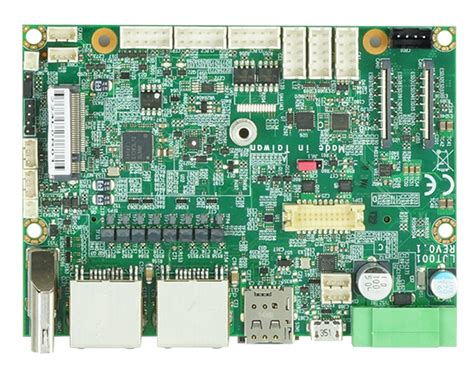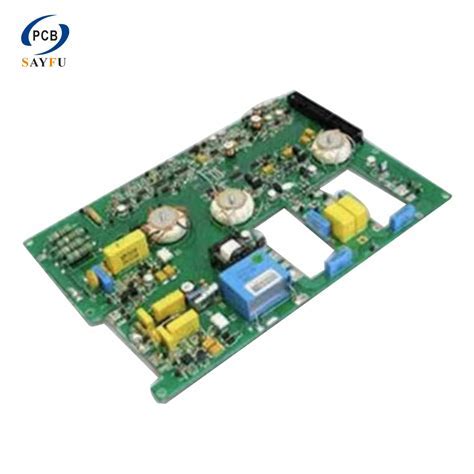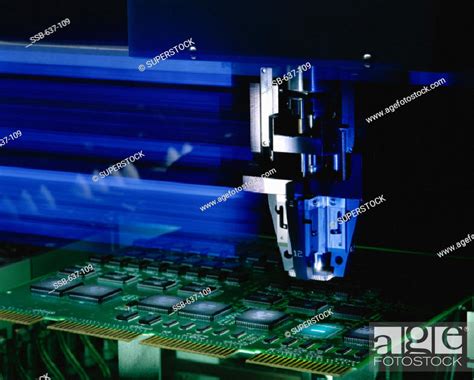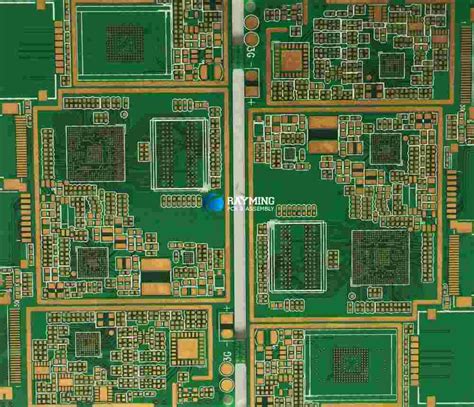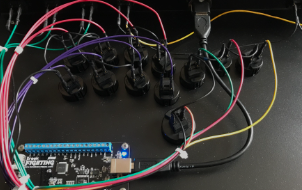Cost-Effective PCB Fabrication Solutions

Key Takeaways
When navigating PCB manufacturing, understanding how to balance cost and quality is crucial. Leading PCB manufacturing companies often offer tiered pricing models, allowing you to scale production volumes without overspending. For instance, batch ordering or panelization can reduce PCB manufacturing cost by optimizing material usage.
"Always request a Design for Manufacturability (DFM) check—this simple step helps identify potential cost traps early, saving both time and resources."
If you’re running a PCB manufacturing business, consider hybrid approaches: combine standard materials for non-critical layers with specialized substrates where performance matters. Many providers now offer instant quoting tools to compare pricing across different specifications, such as layer counts or surface finishes.
For prototyping, prioritize vendors with low-cost PCB fabrication options for small batches. Some companies, like Andwin PCB, specialize in budget-friendly prototypes without compromising turnaround times. However, always verify certifications (e.g., ISO, UL) to ensure quality aligns with your project’s requirements.
Finally, optimizing PCB costs isn’t just about cutting expenses—it’s about strategic trade-offs. For example, opting for a slightly longer lead time might reduce rush fees by 20–30%, freeing up budget for higher-quality components. Use these insights to refine your sourcing strategy and build partnerships with manufacturers that align with your financial and technical goals.

Budget PCB Production Strategies
When seeking cost-efficient PCB manufacturing, understanding how to balance material choices and production scale is crucial. Start by evaluating your design specifications—opting for standard FR-4 substrates instead of high-frequency materials can reduce PCB manufacturing cost by up to 30%. Simplify layer counts where possible; a 2-layer board often suffices for basic applications and cuts expenses significantly compared to 4- or 6-layer alternatives.
For prototyping, consider partnering with PCB manufacturing companies that specialize in low-volume orders. Many offer tiered pricing, where unit costs drop as quantities increase. For example:
| Order Size | Cost per Board (USD) |
|---|---|
| 1-10 | $12.50 |
| 11-50 | $8.20 |
| 51-100 | $5.90 |
Panelization—grouping multiple designs onto a single panel—is another strategy to minimize waste and lower PCB manufacturing business overheads. This approach maximizes material usage, especially for small or irregularly shaped boards.
When sourcing suppliers, prioritize transparency in pricing models. Some providers bundle services like design verification or DFM (Design for Manufacturing) analysis at no extra cost, ensuring your project stays within budget. Additionally, inquire about bulk discounts for repeat orders, which are common in high-volume PCB manufacturing.
Finally, streamline communication by clarifying deadlines upfront. While faster turnaround times often come with premiums, many manufacturers offer standard lead times (5-7 days) at baseline rates. Aligning your timeline with their production schedule can avoid rush fees while maintaining quality.
By integrating these tactics, you’ll optimize both PCB manufacturing cost and operational efficiency, ensuring your project remains financially viable without sacrificing reliability.
Affordable PCB Prototyping Tips
When navigating PCB manufacturing for prototypes, balancing cost and functionality starts with smart design choices. Begin by simplifying your board layout—reducing layers from six to four, for example, can cut PCB manufacturing cost by up to 30% without impacting performance for basic designs. Prioritize standard materials like FR-4 unless high-frequency or thermal demands require specialized substrates, which often inflate expenses.
Collaborating with PCB manufacturing companies that specialize in low-volume orders ensures you’re not overpaying for unnecessary bulk production capabilities. Many providers offer tiered pricing for prototyping, where ordering 5–10 boards instead of a single unit might reduce per-board costs by 40–60%. Critically, verify if these firms provide free design-for-manufacturability (DFM) checks—a service that identifies costly oversights like overly narrow trace widths or improper pad spacing.
Another strategy involves leveraging panelization. Grouping multiple prototypes onto a single panel maximizes material use, lowering waste and per-unit fees. However, confirm with your PCB manufacturing business partner whether they charge extra for depaneling, as some automated services include this step.
For rapid iterations, consider sacrificing lead time flexibility. Opting for a manufacturer’s "economy" turnaround (7–10 days instead of 24–48 hours) can save 20–25% on fees. Tools like online instant quoting engines let you compare PCB manufacturing cost across vendors in real time, highlighting hidden charges for solder masks or silkscreen colors.
Finally, prototype with future scalability in mind. A design that works for 10 units but requires costly adjustments at 1,000 units negates initial savings. Partner with PCB manufacturing companies that offer seamless transition paths to mass production, ensuring your cost-saving prototype choices align with long-term business goals.
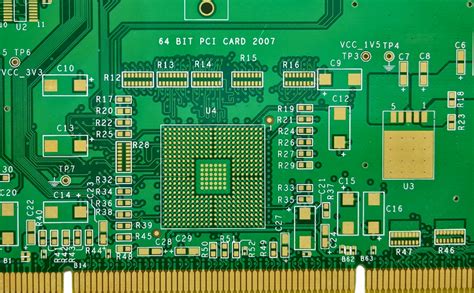
Quality vs Cost in PCB Making
When balancing PCB manufacturing quality and expenses, you’re often faced with a critical trade-off: how to achieve reliable performance without overspending. While lower PCB manufacturing cost might seem attractive, cutting corners on materials or processes can lead to failures in functionality or longevity. For instance, opting for cheaper substrates might reduce upfront expenses but increase the risk of signal loss or thermal instability in high-frequency applications. Reputable PCB manufacturing companies typically prioritize traceability and certifications (like ISO 9001 or UL listings) to ensure consistent quality—factors that justify slightly higher pricing.
However, cost optimization isn’t synonymous with compromise. Many manufacturers now offer tiered pricing models, allowing you to align specifications with your project’s stage. For prototyping, standard tolerances and smaller batch sizes can lower costs significantly, while bulk orders benefit from economies of scale. Advanced PCB manufacturing business strategies, such as panelization (grouping multiple designs on a single board), further reduce material waste and labor costs.
A common pitfall is overlooking design-for-manufacturability (DFM) principles. Simplifying board layouts, minimizing layer counts, and avoiding ultra-fine traces can slash PCB manufacturing cost without affecting performance. Tools like automated DFM checks, offered by many PCB manufacturing companies, help identify cost drivers early in the design phase.
Ultimately, the goal is to strike a balance where quality safeguards your product’s reliability, while cost efficiencies preserve your budget. By clearly communicating your priorities—whether it’s tight tolerances, lead times, or budget constraints—you empower manufacturers to propose solutions that align with both technical and financial requirements.
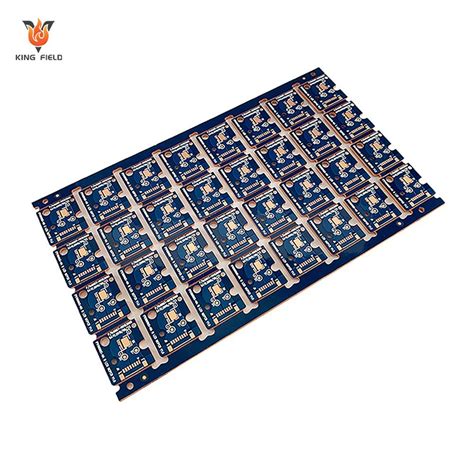
Top PCB Makers for Prototyping
When selecting a partner for PCB manufacturing prototypes, balancing speed, quality, and PCB manufacturing cost is critical. Leading PCB manufacturing companies specialize in low-volume production with rapid turnaround, enabling you to test designs without overspending. For instance, JLC PCB offers 24-hour prototyping with competitive pricing, ideal for startups refining early-stage concepts. Their streamlined process minimizes material waste, directly addressing PCB manufacturing business challenges like budget constraints.
Another standout is PCBWay, which provides tiered pricing based on layer count and surface finishes. Their online quoting tool lets you visualize how design choices—such as opting for FR-4 vs. high-frequency substrates—affect PCB manufacturing cost. For complex designs requiring impedance control or HDI technology, Sierra Circuits combines precision with cost transparency, offering detailed breakdowns of fabrication steps.
Smaller-scale PCB manufacturing companies like OSHPark cater to hobbyists and engineers needing ultra-low volumes (as few as three boards). Their purple solder mask and gold-plated edges have become trademarks for design validation, though lead times may extend slightly compared to industrial-scale providers.
To optimize prototyping expenses, consider panelizing designs or using standardized board sizes offered by most PCB manufacturing services. Some providers even bundle assembly quotes with fabrication, reducing hidden costs in the PCB manufacturing business. Always verify certifications like ISO 9001 or UL listing—these ensure quality benchmarks are met without inflating prices. By aligning your prototype requirements with a maker’s specialization, you avoid paying for unnecessary features while securing reliable functional testing results.
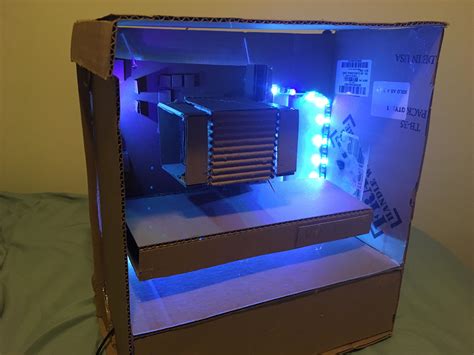
Low-Cost PCB Fabrication Methods
When optimizing PCB manufacturing expenses, your design choices play a pivotal role. Start by simplifying your board layout—reducing layer counts, avoiding unnecessary via structures, and sticking to standard materials like FR-4 can significantly lower PCB manufacturing cost. Many PCB manufacturing companies offer tiered pricing models, where designs with relaxed tolerances or larger trace widths qualify for "value-grade" fabrication rates. For prototyping, consider panelization—grouping multiple designs into a single panel—to maximize material usage and split costs across projects.
Partnering with specialized PCB manufacturing business providers that focus on high-volume production can unlock economies of scale. However, even for smaller batches, bulk ordering strategies (e.g., ordering multiple revisions at once) often yield better per-unit pricing. Always compare quotes from at least three vendors, as hidden fees for tooling, testing, or expedited shipping can erode initial savings.
Material selection is another lever: opting for standard copper weights (1 oz instead of 2 oz) and avoiding exotic substrates like Rogers or ceramic-filled laminates can cut expenses by 15–30%. For non-critical applications, surface finish choices such as HASL over ENIG or immersion silver further reduce PCB manufacturing overhead.
Timing also matters. Aligning orders with manufacturers’ off-peak periods or leveraging their standard lead times (instead of paying premiums for rush jobs) ensures cost predictability. Some PCB manufacturing companies even offer subscription-style programs for recurring projects, bundling fabrication and assembly services at discounted rates.
While pursuing affordability, never compromise on design for manufacturability (DFM) checks. A flawed design that requires respins will negate any upfront savings. Reputable providers balance PCB manufacturing cost with reliability, offering free DFM analysis to catch errors before production begins—a critical step for maintaining both budgets and timelines.

Optimizing PCB Costs Effectively
When navigating PCB manufacturing costs, understanding where value is created—and where it’s lost—is critical. Cost optimization isn’t about cutting corners but aligning design choices, material selections, and supplier partnerships to maximize efficiency. Start by evaluating your design’s complexity: every additional layer, via, or specialized finish increases PCB manufacturing expenses. Simplifying layouts while maintaining functionality often reduces material waste and streamlines production timelines.
Collaborating with PCB manufacturing companies early in the design phase can uncover hidden savings. For example, standardizing substrate materials (like FR-4 instead of high-frequency laminates) or opting for larger panel sizes during fabrication lowers per-unit costs. Many providers offer design for manufacturability (DFM) checks to flag features that inflate PCB manufacturing cost, such as unnecessarily tight tolerances or irregular board shapes. By contrast, leveraging economies of scale—ordering prototypes and full production runs from the same vendor—often unlocks volume discounts.
Another critical step is auditing your PCB manufacturing business partnerships. While low upfront pricing might seem appealing, hidden fees for tooling, shipping, or revisions can negate initial savings. Transparent vendors provide itemized quotes, helping you compare total cost of ownership rather than just unit prices. Additionally, consider regional suppliers: localized production can reduce lead times and logistics expenses, especially for time-sensitive projects.
Finally, embrace technologies like panelization (grouping multiple boards on a single panel) and automated testing to minimize labor-intensive processes. These strategies not only reduce PCB manufacturing waste but also improve consistency across batches. Remember: the goal isn’t just to lower expenses but to build a cost structure that supports scalable, reliable production without sacrificing quality or turnaround speed.
Fast-Turn PCB Services Compared
When evaluating PCB manufacturing timelines, balancing speed and PCB manufacturing cost becomes critical. Most PCB manufacturing companies offer tiered service levels—standard (5-10 days), expedited (3-5 days), and super-rush (24-48 hours)—but pricing structures vary widely. Entry-level prototyping services often prioritize affordability, while premium-tier providers focus on minimizing lead times through advanced automation. For instance, domestic manufacturers may charge 30-50% more for 24-hour turnaround compared to offshore alternatives, but they eliminate shipping delays that could negate time savings.
To optimize speed-to-market, consider splitting orders: use local PCB manufacturing business partners for urgent prototypes and offshore factories for bulk production. However, verify if expedited fees scale linearly—some companies apply flat rates for rushed orders, while others impose surcharges per layer or design complexity. A hidden cost saver? Standardized panel sizes reduce fabrication prep time, letting manufacturers batch your project with others.
Quality consistency remains non-negotiable in fast-turn scenarios. Reputable PCB manufacturing companies maintain separate QC protocols for expedited orders, whereas budget providers might bypass electrical testing to meet deadlines. Always confirm whether certifications like IPC-A-600 apply to rushed services—this ensures your boards meet functional requirements despite accelerated timelines.
Finally, leverage design-for-manufacturability (DFM) tools provided by fabricators. Automated file checks can preempt revisions that delay production, effectively compressing the PCB manufacturing cycle without added costs. By aligning your design constraints with a manufacturer’s existing tooling and material inventories, you avoid custom setups that inflate both timelines and budgets.
Efficient PCB Assembly Solutions
When streamlining your PCB manufacturing process, assembly efficiency becomes the critical bridge between design and final product. Leading PCB manufacturing companies now integrate automated pick-and-place systems with advanced soldering technologies to minimize human error while accelerating throughput. For instance, surface-mount technology (SMT) lines paired with reflow ovens can reduce assembly time by up to 40% compared to manual methods, directly impacting your overall time-to-market and PCB manufacturing cost.
To maximize value, prioritize vendors offering design for manufacturability (DFM) checks during quoting. These pre-assembly audits identify potential bottlenecks—such as overly dense component layouts or incompatible pad sizes—that could inflate labor hours or material waste. Many budget-conscious businesses leverage panelization techniques, grouping multiple boards into a single array, to optimize machine utilization and lower per-unit expenses. However, ensure your chosen partner balances this with precise depaneling tools to avoid micro-cracks or edge defects.
Another key consideration is component sourcing. Reliable PCB manufacturing business operators often maintain vetted supplier networks for resistors, ICs, and connectors, granting access to bulk pricing without compromising authenticity. Some providers even offer consignment models, where you supply specialty parts while they handle high-volume generic components—a hybrid approach that slashes inventory overhead.
For prototypes or small batches, look for shops combining rapid-turn assembly with in-house testing. Automated optical inspection (AOI) and X-ray verification systems add marginal cost but prevent expensive rework cycles down the line. When evaluating partners, scrutinize their changeover flexibility: Can they shift from lead-free HASL to ENIG finishes within the same workflow? Do they support mixed-technology assemblies (through-hole + SMT) without requiring separate setups?
Finally, align your assembly strategy with broader PCB manufacturing cost goals. Modular designs with standardized footprints allow faster machine programming, while avoiding ultra-fine-pitch components (below 0.4mm) cuts placement time by 15–25%. Remember, the most cost-effective solutions emerge when assembly workflows are co-developed with fabrication plans—ensuring materials, tolerances, and layer counts align with both technical needs and budgetary constraints.
Conclusion
When navigating the complexities of PCB manufacturing, striking the right balance between affordability and reliability is paramount. Cost-effective solutions don’t mean compromising on quality—instead, they require strategic partnerships with PCB manufacturing companies that prioritize transparency in pricing and process efficiency. By analyzing your project’s specific needs—whether it’s low-volume prototyping or high-volume production—you can align with manufacturers offering scalable pricing models tailored to your PCB manufacturing cost objectives.
For businesses aiming to optimize their PCB manufacturing business operations, consider how material choices, layer counts, and turnaround times impact overall expenses. Many providers now offer value-added services like design-for-manufacturing (DFM) feedback to preempt costly revisions. Additionally, leveraging bulk-order discounts or shared panel services can further reduce per-unit costs without sacrificing speed.
Ultimately, the key lies in proactive communication with your chosen partner. Clarify expectations around quality certifications, testing protocols, and lead times upfront to avoid surprises. While budget-friendly options exist across the market, prioritize vendors that demonstrate a track record of balancing cost efficiency with consistent output. By applying these insights, you’ll not only streamline fabrication expenses but also build a foundation for long-term success in electronics development.
FAQs
How do PCB manufacturing companies balance quality with affordability?
Leading providers maintain cost-efficiency by optimizing material usage, automating processes, and offering tiered pricing based on order volume. Many now provide PCB manufacturing cost calculators to help you estimate expenses before prototyping.
What factors most impact PCB manufacturing cost?
Key variables include board complexity, layer count, material type, and turnaround speed. High-density designs or specialty substrates often increase prices, while standard FR-4 materials and longer lead times reduce costs.
Can small businesses afford custom PCB manufacturing business solutions?
Yes. Many manufacturers offer scalable pricing models, with low minimum order quantities (MOQs) for prototypes. Some even provide design-for-manufacturing (DFM) analysis to help refine your design before production.
How do I verify a PCB manufacturing partner’s reliability?
Check certifications like ISO 9001 and IPC-A-600 standards, review client testimonials, and request sample reports. Reputable PCB manufacturing companies typically share test protocols and quality control documentation upfront.
Are faster turnaround times always more expensive?
Not necessarily. Some providers use just-in-time production or regional facilities to accelerate orders without premium pricing. Compare multiple quotes to identify services offering the best balance of speed and PCB manufacturing cost.
What hidden costs should I watch for in PCB manufacturing business contracts?
Look for fees related to design revisions, tooling setups, or testing add-ons. Transparent providers detail these in proposals, often bundling them into package deals for budget predictability.
Ready to Explore Tailored PCB Solutions?
For a detailed breakdown of cost-saving strategies and vetted PCB manufacturing companies, please click here. Discover how to align your project requirements with optimized fabrication plans.

